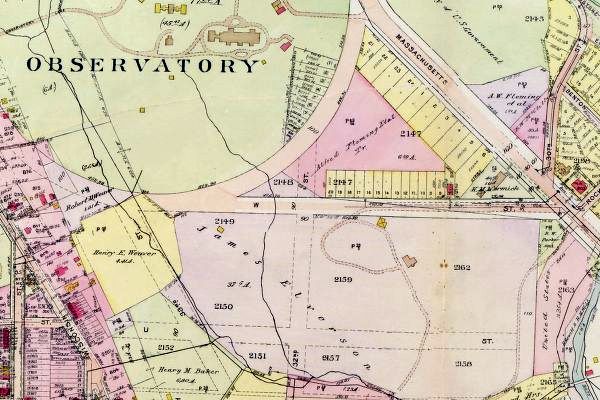Category Harry Wardman

The Myths of the British Embassy II: the Location with Lutyens
The previous entry in this website surveyed the District’s Gilded Age landscape with its Beaux-Arts architecture existing on Massachusetts Avenue before the British Chancery and Ambassador’s Residence arrived in the neighborhood. This was to address misinformation about and the perplexing view that the architect, Sir Edwin Lutyens, designed the United Kingdom complex in rural land […]

The Myths of the British Embassy I: the Location before Lutyens
There persists the unfortunate belief in some publications that in the 1920s the government of the United Kingdom chose a remote site with “little civilization nearby” for their new Washington Embassy. While the British with their previous diplomatic building pioneered the countryside around Connecticut Avenue—with livestock pens and crumbling Civil War barracks for neighbors—that is […]

The Time of Changes and Commemorations in the Embassy Gardens
What became the tumultuous decade of the 1960s at the Washington Embassy began with landscape gardener Perry Wheeler and Lady Caccia working to revitalize the gardens while enclosing them for additional privacy and protection. At the start of 1960, plantings (magnolias, hollies, viburnum, aucuba, cherry laurel, blue spruce) were put in to provide a dense […]

A Trowel for the British Embassy but not in the Gardens
It did not make mention in any of the newspaper reports of the laying of the cornerstone of the Lutyens-designed Embassy on 3 June 1928, but the “Washington trowel” was employed in the ceremony. Ambassador Esmé Howard, standing with American architect Frederick Brooke, builder Harry Wardman and some of the diplomatic community but mostly with […]

Wardman and the British Embassy
For real estate developer and builder Harry Wardman (1871-1938), the new British Embassy in Washington was clearly his great ambition. As touched upon in a previous post on the history of the site, he maneuvered early on to secure the work, managing to sell to the Government the new location while taking on the project […]

Fashion (and Money) Follows the British Embassy
An aerial Associated Press photograph taken in October 1930 of the new British Embassy—five months after Lutyens’s final site visit and its first occupancy—captures the complex in its still-unfinished state. The areas for the pool and tennis court are excavated but not built, the terrace rose beds are barren, a construction road leads from W […]





Recent Comments